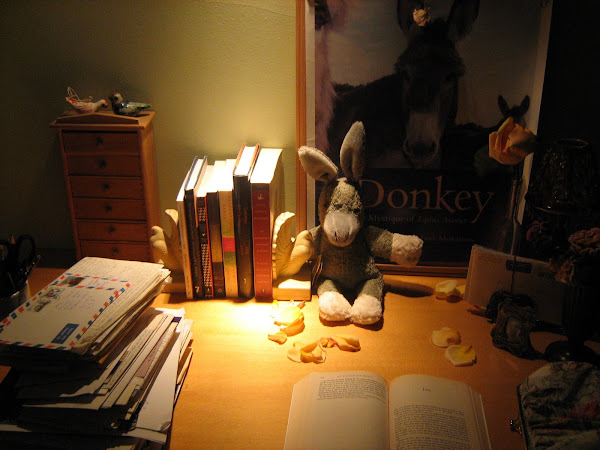This has become my mantra since my buddy and fellow writer Brett Milano first passed it along several years ago. The phrase originates with pubrocker Nick Lowe (who also penned the deathless “What’s So Funny About Peace, Love, and Understanding?”), he tells me. All I know for sure is that those eight words have saved my writing life.
Bash it out. That’s the essence of this advice, and the reason it is key is that this is the single most difficult part of writing. Bashing it out. Getting the words on paper. Putting word after word to make a sentence, a paragraph. A scene.
Apply butt to chair, I frequently tell prospective writers. Start typing (or scribbling). Just (to paraphrase a shoe ad) do it. That’s the first hurdle, the threshold into being a writer. And it is both high and hard to overcome.
 Why is this simple first step so horribly difficult for so many of us? I blame the internal editor. Face it. There is nothing so wonderful as the book you are about to write. We are dreamers. Storytellers. Idealists – or we wouldn’t want to write at all. In our heads, before we’ve committed anything to paper, our ideas are quicksilver. Starlight. Translucent. But as soon as they appear in the light of day, they become fixed in the physical world with all that implies: They become leaden, earthbound. Not fun. It’s a terrifying transition from limitless possibility to concrete immobility, and it is enough to freeze up even the most experienced author. Whatever we write cannot compare to what we imagine. And so to our internal editors – our writing superego or our internalized mothers or high school teachers – it isn’t good enough. We aren’t good enough. And so we don’t write.
Why is this simple first step so horribly difficult for so many of us? I blame the internal editor. Face it. There is nothing so wonderful as the book you are about to write. We are dreamers. Storytellers. Idealists – or we wouldn’t want to write at all. In our heads, before we’ve committed anything to paper, our ideas are quicksilver. Starlight. Translucent. But as soon as they appear in the light of day, they become fixed in the physical world with all that implies: They become leaden, earthbound. Not fun. It’s a terrifying transition from limitless possibility to concrete immobility, and it is enough to freeze up even the most experienced author. Whatever we write cannot compare to what we imagine. And so to our internal editors – our writing superego or our internalized mothers or high school teachers – it isn’t good enough. We aren’t good enough. And so we don’t write.We tell ourselves that we are writing. That we are just searching for the right word. The right phrase. The opening scene that will spark everything off. But in truth we procrastinate. We fiddle. We cook. When I’m trying to start a project, I do more loads of laundry than a two-person household demands. I know this about myself now and accept it as part of my process – and then, I sit down and start the work.
Because if we are going to write, if we are going to be writers, then at some point we have to do the deed. We have to actually set words down and build them up, scene by scene, into something that others can read. We have to overcome the horrible, crippling doubt and dare to make it real.
Over the years, I’ve learned various techniques to get me over the threshold. One of those is, of course, fear of deadline. When you earn your rent by what you write, fear is a great motivator. This often works for students, too, and explains why so many assignments are penned only hours before deadline. This fear can be useful, and I confess I’ve allowed myself to wallow on occasion on a more nebulous, existential variety: Maybe I don’t have any more books in me. Maybe I’ve done it all and should simply teach full-time or take up PR. For while there is absolutely nothing wrong with either profession, the idea of not writing terrifies me – and gets me back to work.
I’ve said before that I believe the ability to write is like a muscle, and keeping the muscle in shape helps, too. All those years doing journalism have given me some fall-back techniques – surefire “ledes” to start a story that I can use in fiction, too, if need be. I’ll also assign myself fairly arbitrary word lengths – say, 1,000 words a day – and make myself do them.
But basically these techniques only work because of the second part of the mantra, the “tart it up later.” I can use a hackneyed device (“start with a quote”) or bash out 1,000 words of transitional sentences because I know I can fix it later. I tell myself that in a month or two, whenever I have a draft, I can choose to rewrite the entire work – or toss half of it. I can bash it out now, because (as I remind myself), I will have the opportunity to tart it up later. That’s the promise I make myself and to my internal editor. In exchange, she lets me write.
That sounds a little like a trick, doesn’t it? But it’s not so much outwitting the internal editor, as it is buying her off. I’m just typing, I tell her. You’ll get your turn later. And for a little while, she leaves me in peace.
* * *
How do you get yourself writing? What are your biggest hurdles and your successful tricks?
Thanks so much for letting me vent her this week! I’ve appreciated all your comments both posted and privately emailed. If you’d like to continue the conversation, you can find me on Facebook and also on my home blog. Be well!
Clea








